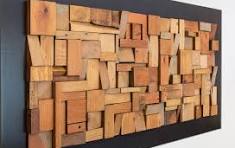The Versatile Beauty of Acrylic Paint
Acrylic paint is a beloved medium among artists for its versatility, vibrant colors, and quick drying time. Whether you’re a seasoned painter or just starting your artistic journey, acrylic paint offers a wide range of possibilities for creative expression.
Properties of Acrylic Paint
One of the key characteristics of acrylic paint is its fast drying time. This allows artists to work efficiently and layer colors without waiting long periods for each layer to dry. Additionally, acrylic paint is water-soluble when wet, making it easy to clean up with water. Once dry, acrylic paint becomes water-resistant and creates a durable finish.
Applications of Acrylic Paint
Acrylic paint can be used on various surfaces, including canvas, paper, wood, metal, and more. Its adaptability makes it suitable for different painting techniques such as layering, blending, glazing, and impasto. Artists can also mix acrylic paint with various mediums to achieve different textures and effects.
Benefits of Acrylic Paint
One of the main advantages of using acrylic paint is its versatility. Artists can create both opaque and translucent effects by adjusting the thickness of the paint or adding mediums. Acrylic paint also dries quickly to a flexible finish that is resistant to cracking over time.
Conclusion
Acrylic paint continues to be a popular choice for artists due to its versatility, vibrant colors, and ease of use. Whether you’re painting landscapes, abstract art, portraits, or still life compositions, acrylic paint offers endless possibilities for creative exploration. So grab your brushes and palette—let the beauty of acrylic paint inspire your next masterpiece!
Mastering Acrylic Painting: 6 Essential Tips for Beginners
- Always make sure to shake the acrylic paint tube before using it to ensure proper consistency.
- Start with a limited color palette and mix your own colors to expand your range.
- Clean your brushes with water immediately after use to prevent the paint from drying on them.
- Layering is key in acrylic painting, allow each layer to dry before adding another for best results.
- Experiment with different textures by using various tools like sponges, palette knives, or even household items.
- Don’t be afraid to make mistakes – acrylic paint is forgiving and allows for easy corrections.
Always make sure to shake the acrylic paint tube before using it to ensure proper consistency.
To ensure the proper consistency of acrylic paint, it is essential to shake the paint tube before using it. By shaking the tube, you can mix any settled pigment and medium, ensuring a smooth and uniform texture for your painting. This simple step helps maintain the quality of the paint and ensures optimal performance on your chosen surface.
Start with a limited color palette and mix your own colors to expand your range.
Starting with a limited color palette and mixing your own colors is a valuable tip for artists working with acrylic paint. By mastering color mixing, artists can create a wide range of hues, tones, and shades from just a few basic colors. This approach not only enhances creativity but also allows artists to develop a deeper understanding of color theory and how different pigments interact. Experimenting with color mixing can lead to unique color combinations that add depth and vibrancy to artworks, making each piece truly distinctive and personalized.
Clean your brushes with water immediately after use to prevent the paint from drying on them.
To maintain the quality and longevity of your brushes when working with acrylic paint, it is essential to clean them promptly with water after each use. By washing the brushes immediately, you prevent the paint from drying on the bristles, ensuring that they remain in optimal condition for future painting sessions. This simple tip not only helps preserve your brushes but also saves you time and effort in cleaning hardened paint later on.
Layering is key in acrylic painting, allow each layer to dry before adding another for best results.
In acrylic painting, mastering the art of layering is essential for achieving optimal results. To create depth and richness in your artwork, it is crucial to allow each layer of acrylic paint to fully dry before adding another. By patiently building up layers, artists can enhance the texture, color intensity, and overall visual impact of their paintings. This technique not only adds complexity to the composition but also ensures that each layer remains distinct and vibrant, resulting in a more polished and professional finish.
Experiment with different textures by using various tools like sponges, palette knives, or even household items.
To enhance your acrylic painting experience, consider experimenting with different textures by incorporating a variety of tools such as sponges, palette knives, or even household items. By exploring these diverse tools, you can add depth and dimension to your artwork, creating unique and visually captivating effects. Whether you aim to achieve a smooth and blended finish or a textured and layered look, embracing these tools allows for endless possibilities in expressing your creativity through acrylic paint.
Don’t be afraid to make mistakes – acrylic paint is forgiving and allows for easy corrections.
When working with acrylic paint, it’s important not to be afraid to make mistakes. Acrylic paint is a forgiving medium that allows for easy corrections. If you make a mistake or want to change something in your artwork, you can simply paint over it once the layer is dry. This flexibility gives artists the freedom to experiment, try new techniques, and refine their work without the fear of irreversible errors. Embracing mistakes as part of the creative process can lead to unexpected discoveries and unique artistic expressions in acrylic painting.



